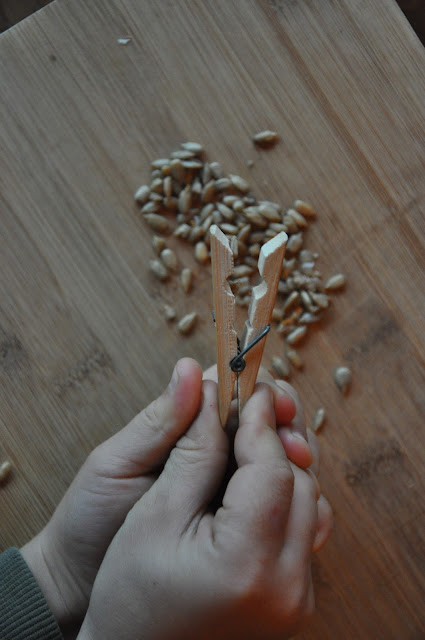Darwin: Bird Beak Adaptation
Years ago, we conducted the Bird Beak experiment with the big kids. It was fitting to add this to our Darwin studies for the younger two. https://windyacresworkshop.blogspot.com/2019/02/sci-fri-bird-beak-experiment.html
Simple set-up; grab a variety of household items that can grab/pinch (tweezers, chopsticks, clothes pegs, nut-crackers...) as well as some straws and eye droppers.
Then provide a variety of food samples; marshmallows, seed in shells, pasta, nuts in shells. It's not really what type of food as much as the variety of texture and size. Also include a juice or liquid that will serve as nectar.
The scientists then have to use the 'beaks' (household items) to feed themselves the food samples. Their job is to determine which is the best beak for each sample.
The lesson demonstrates Darwins theory that animal species (plants too) evolve over time to suit their environment for survival purposes.

We then read the story Island in which Jason Chin describes how finches on the Galapagos survived only when their beaks were larger and could eat larger seeds remaining after drought. The finches with smaller beaks died while those with larger beaks passed on the larger beak trait to their offspring.
 j
j